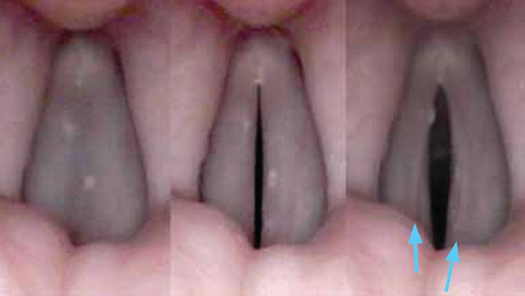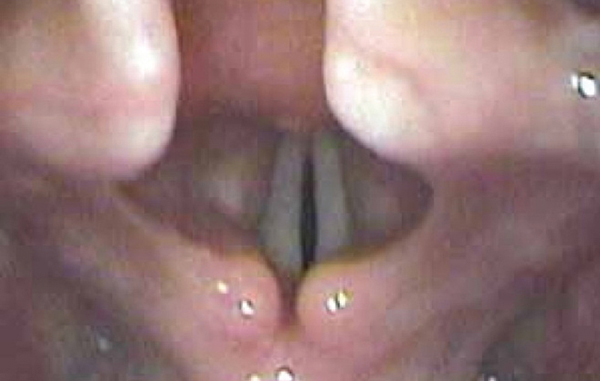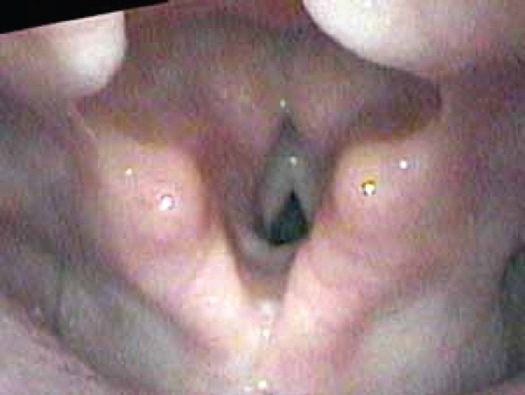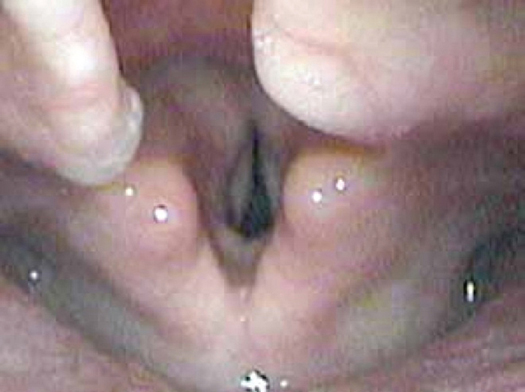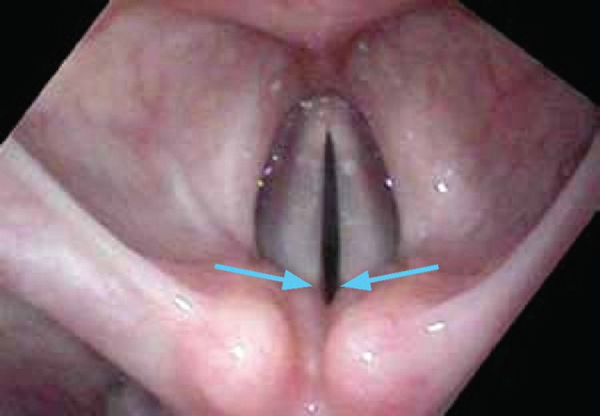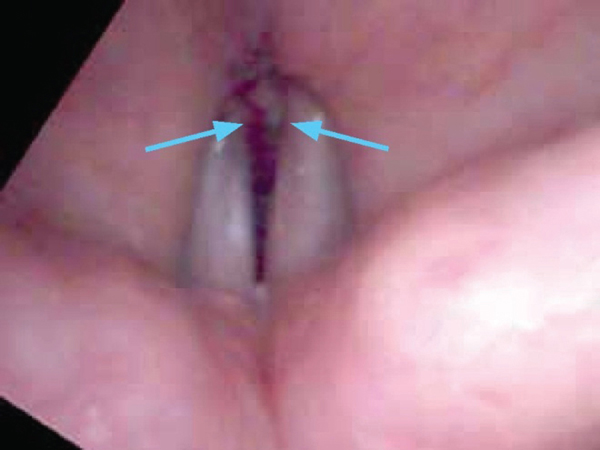35 Assessment of the Professional Voice: The Three-Part Examination In most ways, a professional’s voice is no different from other individuals. The vocal cords open for the professional to breathe in and they close, air is passed through them and they vibrate to generate sound, just like any other person. How then is the professional’s voice different? By definition, a professional uses his or her voice to earn her living. Consequently, any impairment of the voice risks a corresponding financial instability. The vocal cords are a highly valuable organ for the voice professionals. Another difference in the professional’s voice (and it is a generalization) is that individuals who are innately talkative often seek out and find a profession where they can apply their talkativeness to work for them. Professional voice users, who are then often innately talkative, risk overusing their voice both at work and at play. A professional voice user is not universally talkative. Occasionally, a very quiet person ends up in an occupation where he is required to use his voice much more than he anticipated. A quiet professional voice user suffers from a different set of problems than the talkative voice professional. Besides vocal personality, vocal technique may have a significant impact on the voice professional’s sound quality. Depending on how vocal cords are used, various impairments in vocal quality may occur. The following three uses of the voice—overuse, underuse, and improper use—constitute a group of voice disorders that we may label functional voice disorders. The label functional implies that how the voice is used causes impairment in sound quality. By contrast, when a change in the structure of the vocal cords occurs primarily and causes a change in airflow, we may label this a structural voice disorder. Consequently, while a voice professional is subject to all the same vocal disorders that any individual is, when she complains of hoarseness, she has a higher risk of having a functional voice disorder than any other type. An assessment of the professional voice requires an elevated awareness of the potential for a functional voice disorder. First, let us define the terms voice and hoarseness. Voice is sound. Sound production is based on physics. All impairment of voice comes down to a physical change in vibration. In the idealized situation, to make a sound 1.The back of the vocal cords leave the “breathing in” position, moving together until parallel. 2.Tension is applied to the vocal cords as they initially occlude the airway. 3.Air is propelled through them, usually from below. 4.They start flexing open in the middle. 5.Increasing tension causes the cords to snap back closed. To create pulses of air vibration, steps 4 and 5 repeated (Fig. 35.1). The vocal cords oscillate quite rapidly, perhaps 100 to 200 times per second during casual speaking, with smaller cords tending toward faster oscillation. In a set of perfect cords, we could characterize them as •Being open about half the time and closed about half the time •Letting air out in measured puffs •Not leaking air during the closed phase •Vibrating symmetrically This creates the sound that we hear, and any single note can be visualized on an oscilloscope as a sine wave—a regular vibration and when we hear it, we hear a musical tone. We can talk about the tone in terms of frequency or vibrations per second. Hertz is a common scientific measurement, which requires the use of logarithms for calculations. We can also use a scale such as the musical, western chromatic scale to label each tone produced (C3, C3#, D3, D3#, etc.).a Each succeeding note is one semitone higher than the previous. This “semi-tone method” for documenting the voice visually distributes the sounds into audibly equal intervals without delving into the complexities of the logarithmic Hertz scale. Figure 35.1 Vocal cords vibratory cycle. They are completely closed on the left. They begin to open in the center, and on the right, they have reached maximal opening before they will begin to close again. The mucosal wave can be seen in the right photo as a curved line just lateral to the edge of the vocal cord (arrows). In a video, this line propagates from the margin and moves laterally. aMeasuring pitch and pitch notation. All hoarseness can be described in one of two ways. In the first, the vocal cords do not come together as they should allowing air leak. Let us call this husky hoarseness. The second type of hoarseness is caused by asymmetric vibration. Because there are two vocal cords, when they are not symmetric, they tend to vibrate at two different pitches. A physician would call this sound diplophonia. Di means two and phonia means voice, so two voices can be heard at once. Usually, because the cords are only slightly out of sync, the diplophonia will be inharmonious, and the perception will be of a rough or gravelly quality. We will call this rough hoarseness. Let us explore these two ideas in more detail •Husky hoarseness. •Rough hoarseness. To understand husky hoarseness, it is helpful to think of one of the extreme types of sound production we can make with our larynx: extremely soft sound. We can generate sound in the larynx with the vocal cords in a partially or completely open position—that sound is called a whisper. Normally, the vocal cords come completely together when making a sound (Fig. 35.2). The mid-portion oscillates open and closed. Figure 35.2 During normal sound production, the membranous vocal cords lie parallel to each other and vibrate. Although the back of the vocal cords is hidden from view beneath the arytenoids in the photo, the back of the vocal cords is together. This stroboscopic photo was taken during the open phase of vibration. Figure 35.3 In a whisper, the back of the larynx might be open, whereas the membranous vocal cords might be closed such that all the air is forced out through an opening at the posterior end of the vocal cords. By contrast, in a whisper, the vocal cords do not vibrate (Fig. 35.3). The airflow is increased and as it passes a narrowed spot, turbulence is created. Airflow that is turbulent consists of many different pitches simultaneously: white noise. The larynx can narrow the airway in several ways without allowing the vocal cords to vibrate. This signal, composed of white noise, lacks intensity and cannot be heard well or from very far away. It is not very penetrating. White noise blends with environmental noise. Conversely, we typically produce voice at a single pitch to generate a strong signal that will stand out against background noise. This is a signal that we modify with vowels and consonants to carry information from one human to the next. A stage whisper is meant to sound like a whisper, yet the audience needs to hear the speaker. In a stage whisper for a theater production, the vocal cords are allowed to vibrate a little, so that the sound has the character of white noise, but enough vibrations of the vocal cords for the sound to carry into the audience. A stage whisper is really a mixture of a lot of whisper and a little bit of a vibration (Fig. 35.4). In between a whisper (cords not vibrating) and a clear tone (cords completely parallel with all air passing between them), we can have some mix of a pure tone and white noise. The white noise gives the voice a husky quality. At times, a singer, perhaps a nightclub singer, might wish to add a component of breathiness to her voice to give it a sensual quality. She is adding an intentional gap between the vocal cords to let some air leak out. So while a whisper is the extreme of turbulent airflow through the larynx, any gap between the vocal cords will add a commensurate degree of turbulence perceived as a huskiness of the voice. We may desire that quality, but if we do not, it is hoarseness. Remember, under idealized conditions, the posterior portion of the vocal cords moves completely together during voice production, and the vocal cords lie parallel to each other. Air is blown between them, and the vocal cords rapidly open and close, letting out regular pulses of air. In what ways might the vocal cords incompletely close? There are a couple of characteristic types of gaps that occur between the vocal cords: •Posterior gap •Anterior gap •Central gap •Split gap •Timing gap All of these types of gaps leak air and create a husky hoarseness. Some of these gaps are more common in the professional voice user. If the vocal cords are going from the breathing in, then inverted V-shape toward a parallel position but they stop short of complete closure, this leaves a gap posteriorly (Fig. 35.5). One example of this type of gap is muscle tension, where the opening posterior cricoarytenoid (PCA) muscles partially tighten during phonation and hold the cords slightly apart, allowing air to escape between the back portion of the vocal cords. Vocal cord trauma may disrupt the vocal cords where they attach at the front of the larynx (Fig. 35.6). If the vocal cords heal slightly apart anteriorly, then air escapes through the front of the vocal cords. This is a very uncommon type of gap. Figure 35.5 Blue arrows lie along the direction of closure and point to the gap remaining between the vocal processes when there is incomplete closure. If the vocal cord muscles are not exercised regularly by talking, the vocal cord muscles atrophy and can no longer tense to a straight line (Fig. 35.7). They remain concave, even when the back of the cords are completely closed. Consequently, a central gap is created. Aging contributes to this as well. Much like the skin on the face gradually sags with aging, the vocal cords sag with aging as they lose elasticity. Typically, this sagging, or as physicians call it, bowing, is relatively symmetric. There is a nearly oval-shaped gap with pointed ends between the vocal cords. Air leaks out the middle. Vocal overdoers typically have hefty vocal cord muscles and may have in addition, a callus or swelling on the edge of the vibrating portion of the vocal cord (Fig. 35.8). This protuberant swelling (or swellings) will touch first as the vocal cords are tensed and leave an opening both anterior and posterior to the swelling. Hence, air will leak from in front of and behind the swellings.
Voice
Hoarseness
Air Leak and Diplophonia
Whisper
Pure Air Leak
Gaps: Huskiness
Posterior Gap
Anterior Gap
Central Gap
Split Gap
Stay updated, free articles. Join our Telegram channel

Full access? Get Clinical Tree


